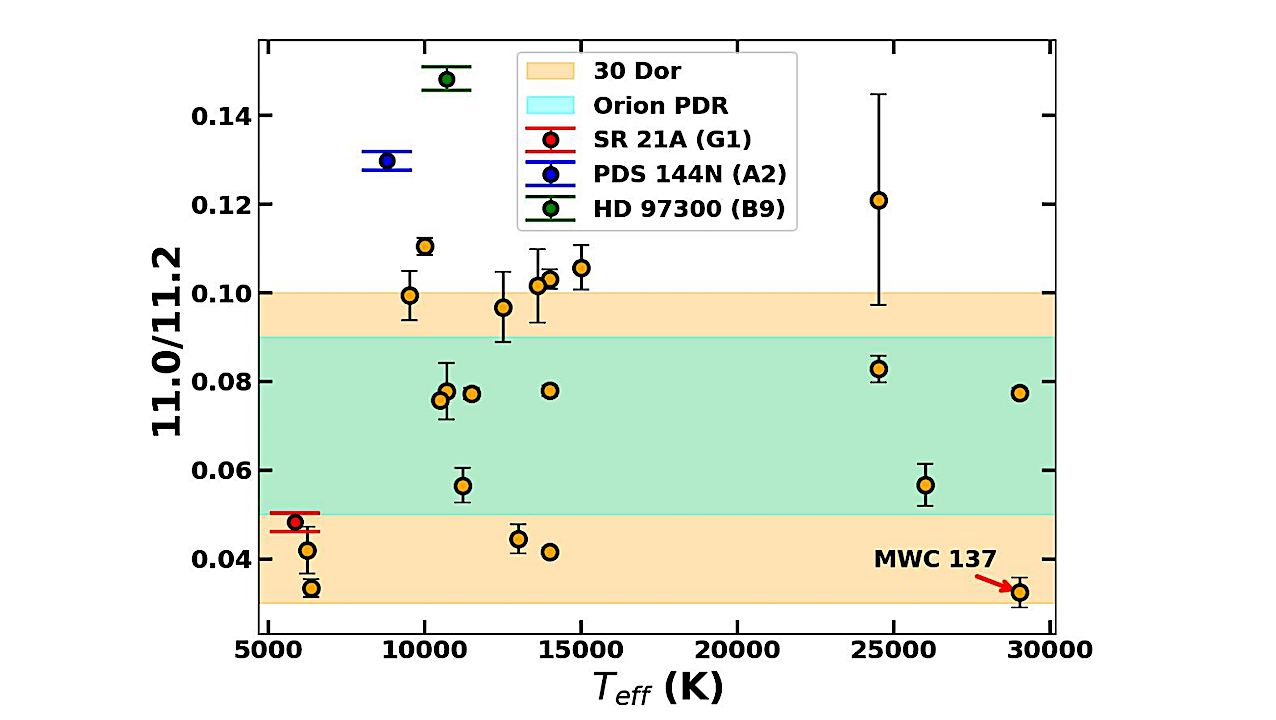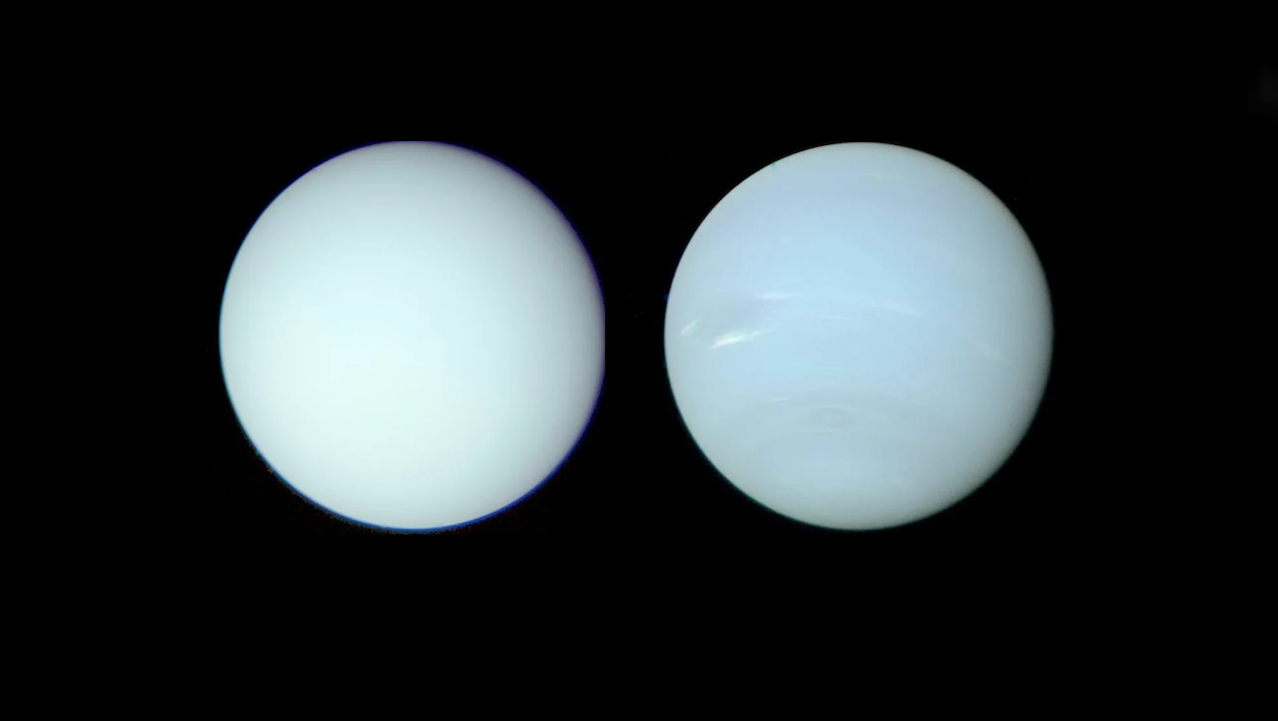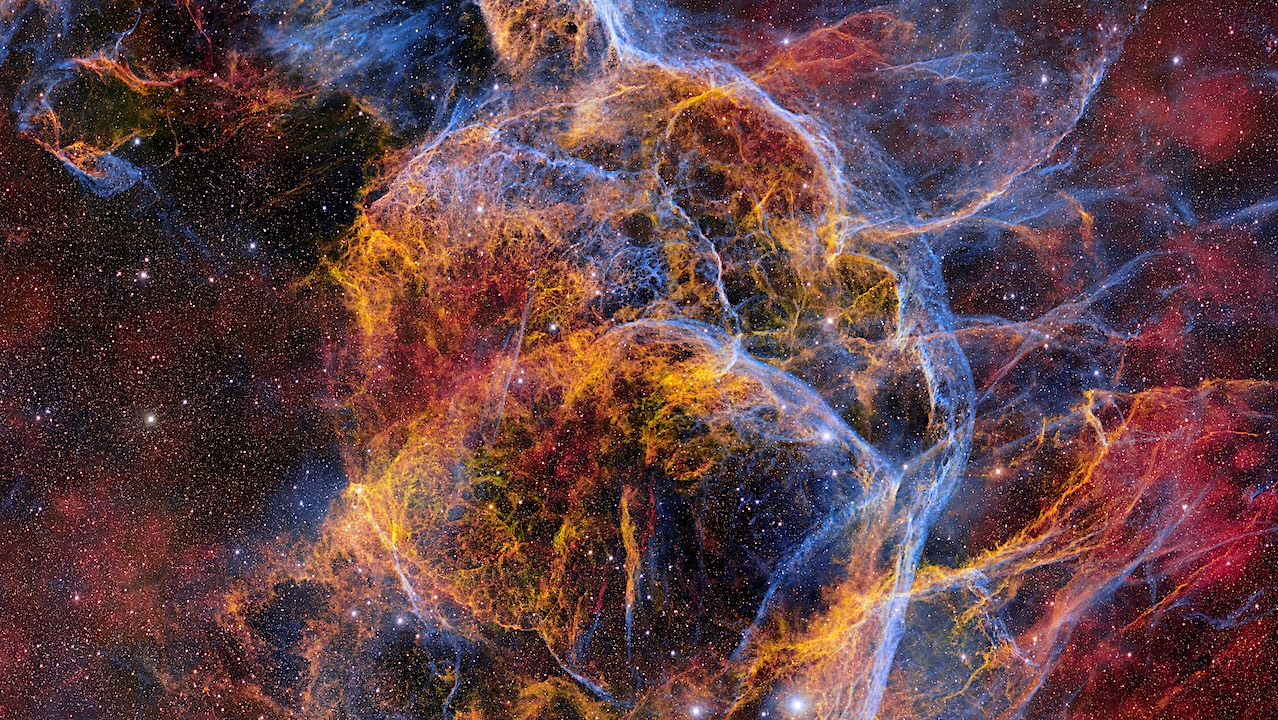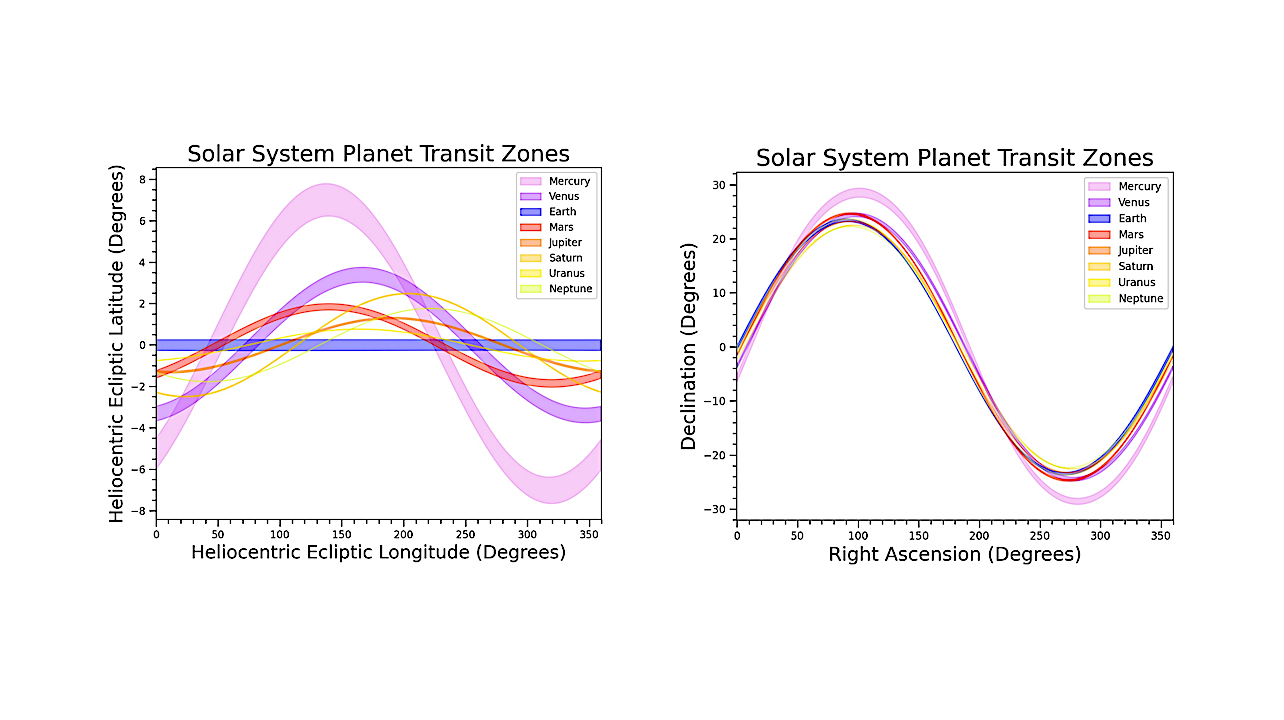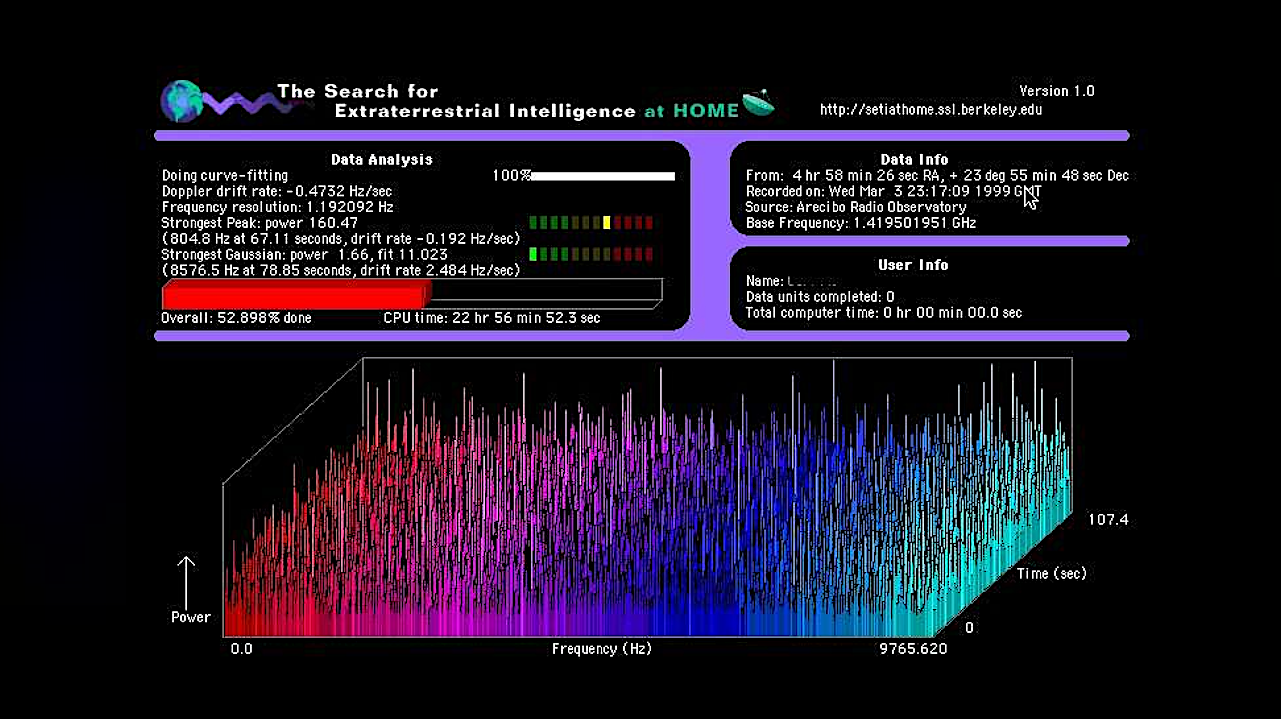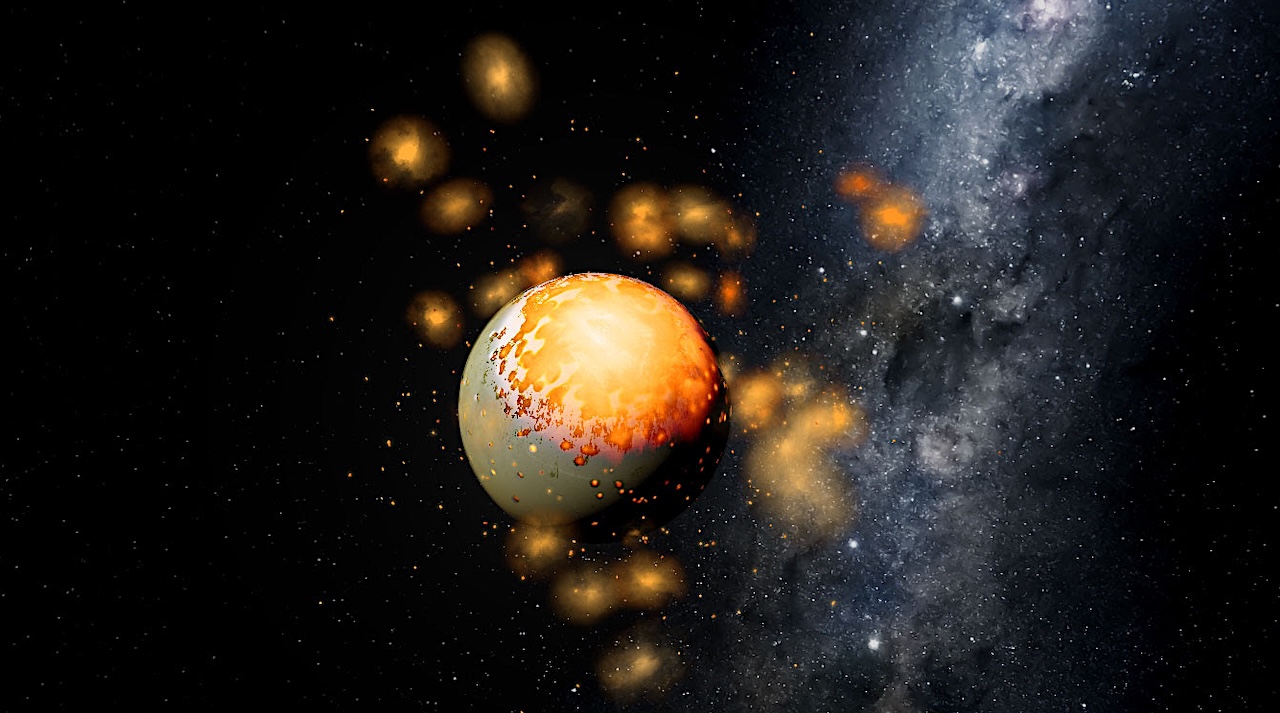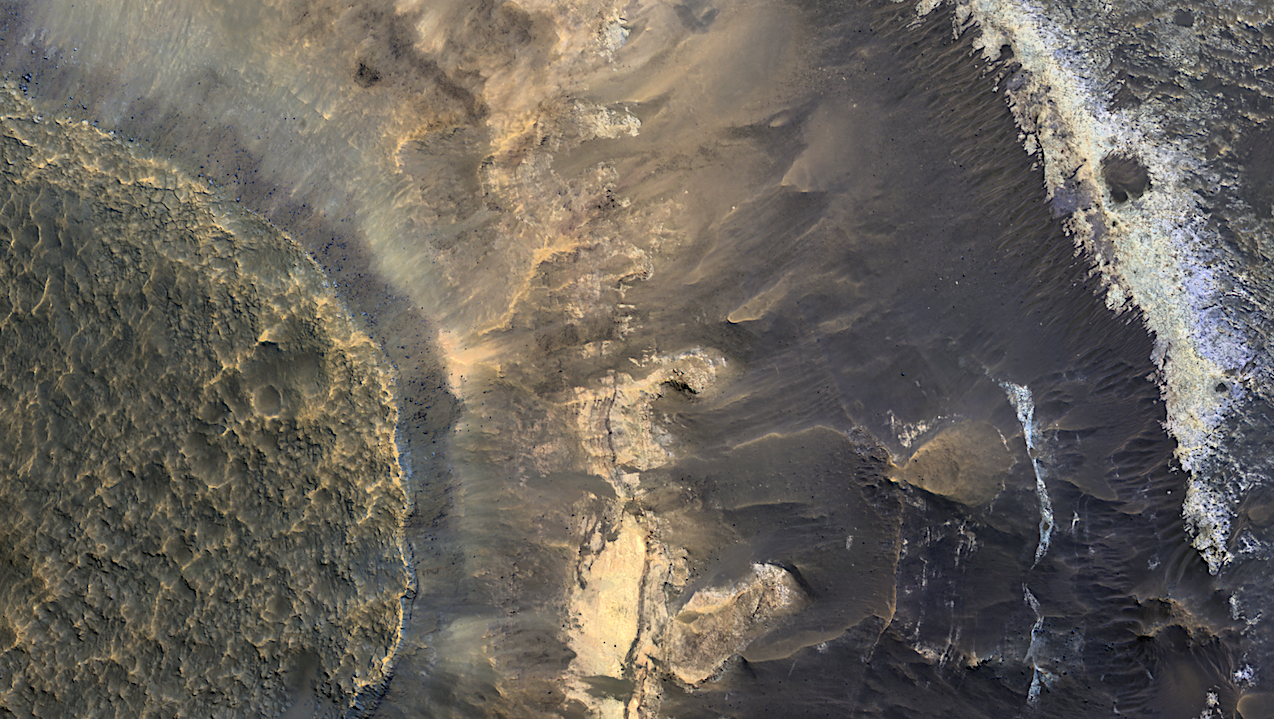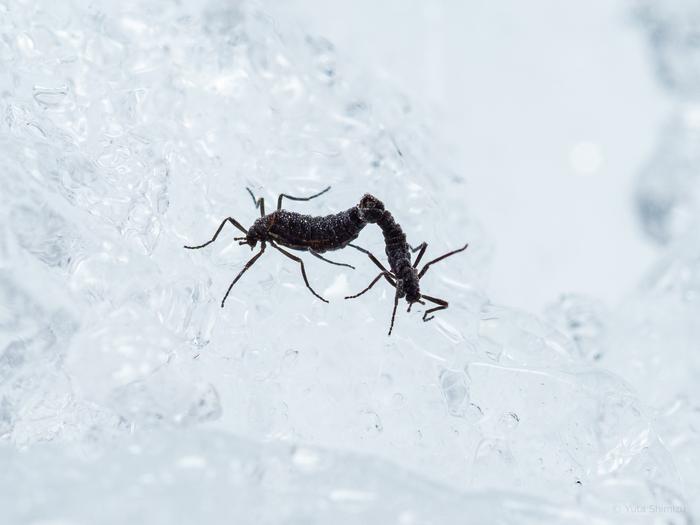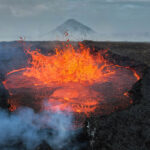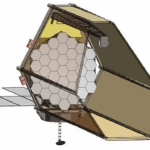Distribution of the 11.0/11.2 PAH band ratio versus stellar effective temperature for our HAeBe sample. Reference stars (SR 21A, PDS 144N, HD 97300) shows different ionization regimes. The shaded regions
Astrobiology89- Page
Reprocessed images of Uranus ] and Neptune NASA/JPL-Caltech (Uranus and Neptune); “Modelling the Seasonal Cycle of Uranus’s Colour and Magnitude, and Comparison with Neptune,” by Patrick G. J. Irwin
Exploration Crew Medical Officer – Grok via Astrobiology.com Introduction: Predictive analytics may be a useful adjunct to identify training needs for exploration class medical officers onboard deep space vehicles. Methods:
This colorful web of wispy gas filaments is the Vela Supernova Remnant, an expanding nebula of cosmic debris left over from a massive star that exploded about 11,000 years ago.
Transit zones for all solar system planets are plotted in heliocentric ecliptic coordinates (left) and in celestial coordinates (right). Each planet’s transit zone is shown as a colored sinusoidal band.
SETI@home is a radio Search for Extraterrestrial Intelligence (SETI) project that looks for technosignatures in data recorded at the Arecibo Observatory. The data were collected over a period of 14
Impact history should play a crucial role in the search for habitable exoplanets like Earth — SwRI An SwRI-led team compared the early impact history of Venus and Earth, determining
A clay-rich mesa in the Hellas basin of Mars. The blue color near the rim is aluminum bearing clays. The red-orange color below that is iron and magnesium bearing clays.
Keith Cowing Explorers Club Fellow, ex-NASA Space Station Payload manager/space biologist, Away Teams, Journalist, Lapsed climber, Synaesthete, Na’Vi-Jedi-Freman-Buddhist-mix, ASL, Devon Island and Everest Base Camp veteran, (he/him) 🖖🏻 Follow on
The Antarctic midge is the only known insect native to Antarctica. Credit Yuta Shimizu / Osaka Metropolitan University Picture an Antarctic animal and most people think of penguins, but there
-
 012024 in Review: Highlights from NASA in Silicon Valley
012024 in Review: Highlights from NASA in Silicon Valley -
 02Panasonic Leica Summilux DG 15mm f/1.7 ASPH review
02Panasonic Leica Summilux DG 15mm f/1.7 ASPH review -
 03How New NASA, India Earth Satellite NISAR Will See Earth
03How New NASA, India Earth Satellite NISAR Will See Earth -
 04And Thus Begins A New Year For Life On Earth
04And Thus Begins A New Year For Life On Earth -
 05Astronomy Activation Ambassadors: A New Era
05Astronomy Activation Ambassadors: A New Era -
06SpaceX launch surge helps set new global launch record in 2024
-
 07Space Force plans new ‘Futures Command’ amid pressure to speed up modernization
07Space Force plans new ‘Futures Command’ amid pressure to speed up modernization


